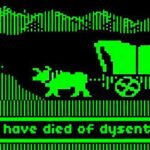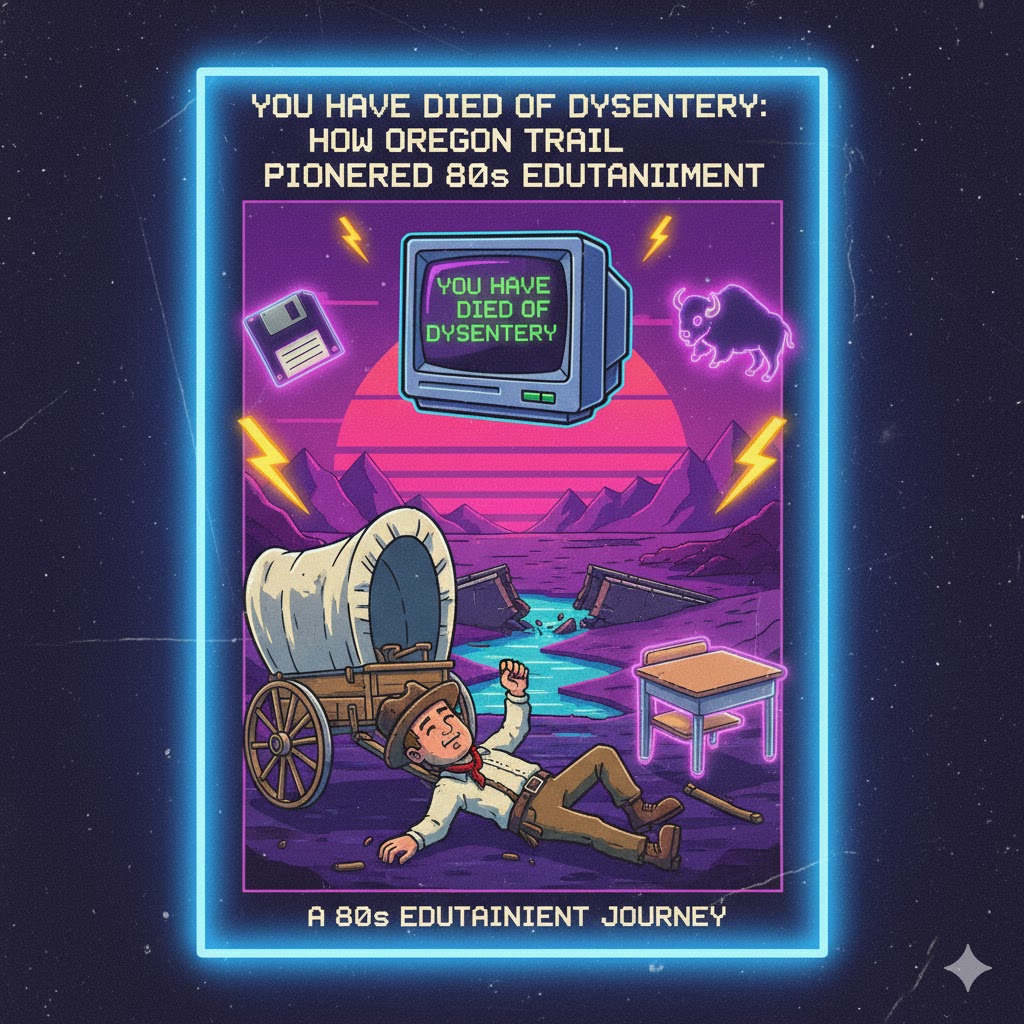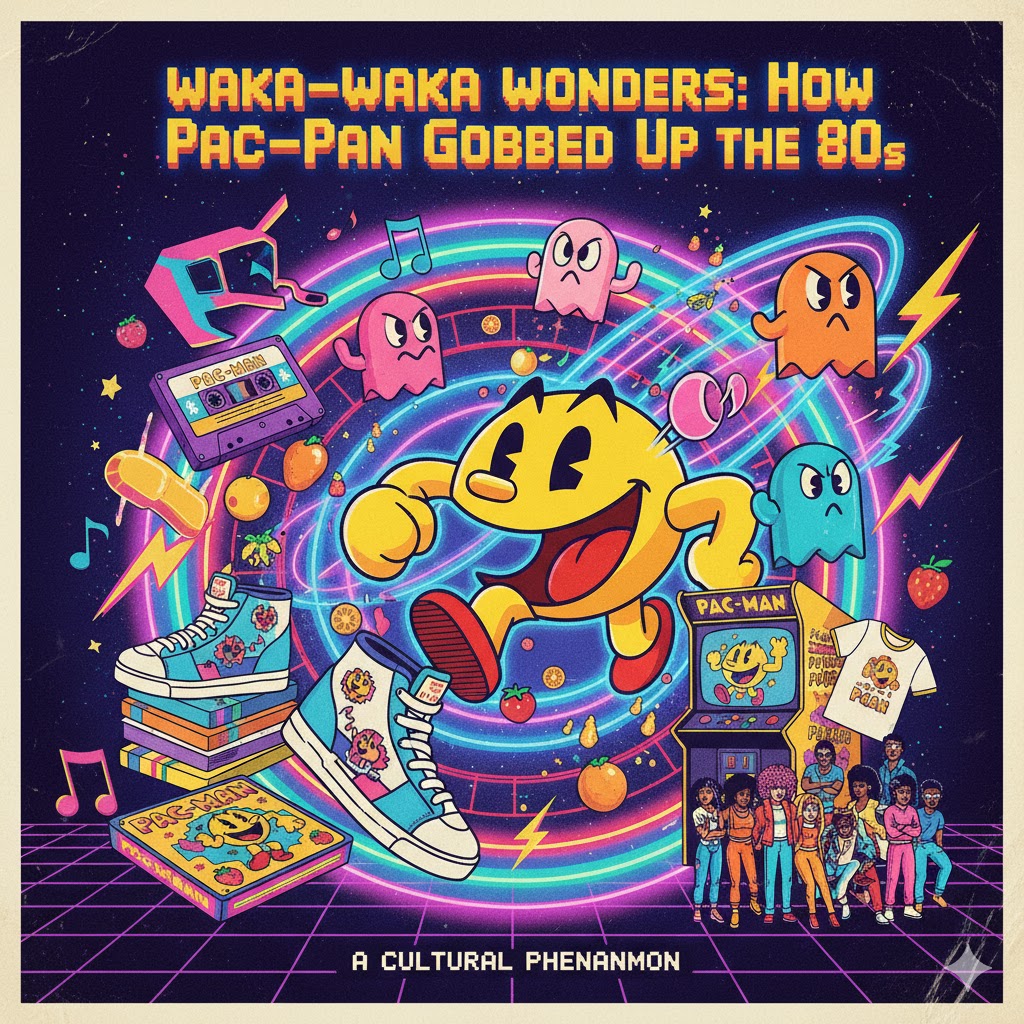 Few computer games of the 1980s left as indelible a mark on American youth culture as Oregon Trail. Far more than a mere educational tool, this digital adventure captured the imaginations of children across the country, blending history, strategy, and a subtle sense of danger into an experience that felt both fun and formative. Its pixelated landscapes, blinking text prompts, and infamous phrases like “You have died of dysentery” became touchstones of a generation, cementing Oregon Trail as an essential part of 1980s pop culture.
Few computer games of the 1980s left as indelible a mark on American youth culture as Oregon Trail. Far more than a mere educational tool, this digital adventure captured the imaginations of children across the country, blending history, strategy, and a subtle sense of danger into an experience that felt both fun and formative. Its pixelated landscapes, blinking text prompts, and infamous phrases like “You have died of dysentery” became touchstones of a generation, cementing Oregon Trail as an essential part of 1980s pop culture.
The origins of Oregon Trail trace back to the early 1970s when Don Rawitsch, Bill Heinemann, and Paul Dillenberger developed it for a classroom setting in Minnesota. The goal was simple yet ambitious: teach students about 19th-century pioneer life in an engaging way. By simulating the challenges of traversing the Oregon Trail—from fording rivers to managing limited supplies—the game transformed history lessons into interactive storytelling. This educational ethos carried over into the 1980s, when the game found a wider audience thanks to the proliferation of personal computers like the Apple II and Commodore 64. What might have remained a niche classroom activity instead exploded into a national phenomenon, thanks to schools equipping computer labs with these machines and making the game accessible to millions of students.
A defining characteristic of Oregon Trail was its combination of unpredictability and strategy. Players assumed the role of a wagon leader guiding a party of settlers from Missouri to Oregon in the 1840s. Along the journey, they made crucial decisions: how much food to carry, when to rest, which route to take, and how to respond to disease, broken wagons, or river crossings. The game’s risk-reward structure created tension and excitement, which was rare for an educational program. Unlike traditional lessons, the game punished careless choices with sometimes devastating consequences, often in darkly humorous ways. Few gaming moments were as memorable—or as dreaded—as the appearance of the message “You have died of dysentery,” which became an iconic line that transcended the game itself.
The cultural impact of Oregon Trail in the 1980s extended far beyond the classroom. Its presence in schools meant that nearly every child who had access to a computer encountered it, making it a shared experience across regions and social strata. This ubiquity helped cement inside jokes, common references, and shared nostalgia among an entire generation. Kids would trade stories about how they lost party members, clever strategies to reach Fort Laramie without running out of food, or the frustrations of navigating treacherous rivers. These discussions, often happening in hallways or at lunch tables, contributed to a sense of community around the game, which was unusual for digital entertainment at the time.
Television, magazines, and other media outlets of the 1980s further amplified the game’s cultural significance. While computer games were still seen as niche, Oregon Trail gained recognition for straddling the line between education and entertainment—a hybrid that appealed to both teachers and children. References to the game began appearing in pop culture, often used to signify retro geekiness or childhood nostalgia. Its influence extended into parodies, comics, and eventually other forms of media in the decades to follow. Even in the 1980s, the game’s reputation for unexpected mishaps and sometimes hilarious deaths made it a favorite topic of conversation for adults recalling their own school experiences.
The gameplay mechanics of Oregon Trail also reflect the broader technological and cultural context of the 1980s. The decade saw the rise of personal computing, and children increasingly interacted with computers not just as tools but as entertainment platforms. Oregon Trail bridged the worlds of education and gaming, showing that computers could facilitate learning through engagement rather than rote memorization. The text-based interface, coupled with simple graphics, encouraged imagination. Players filled in the details mentally, visualizing rivers, mountains, and prairies as their wagon party struggled forward. This reliance on imagination and decision-making fostered critical thinking skills in a way that traditional teaching methods rarely could.
Another factor contributing to the game’s impact was its adaptability. Over the course of the 1980s, Oregon Trail was updated and ported to multiple platforms, including DOS systems, Apple II, and even early Macintosh computers. Each iteration preserved the core gameplay while refining graphics and input methods, allowing new generations of students to engage with the game while retaining the charm that made it memorable. The ability to save progress, experiment with strategies, and replay the journey again and again encouraged prolonged engagement, making the game a staple of school computer labs for years.
Oregon Trail also reflects broader trends in 1980s youth culture. The decade was marked by a fascination with adventure, risk, and exploration, evident in movies like Indiana Jones and The Goonies, as well as in television shows aimed at children. The game captured these same themes, albeit in a historical context. Unlike action films, however, Oregon Trail required thoughtful planning, resource management, and a willingness to accept consequences. This made it a form of edutainment that mirrored the decade’s growing interest in interactive experiences, long before video games became mainstream entertainment. The game’s historical setting also tapped into a broader American fascination with pioneer mythology, presenting a simplified but compelling vision of westward expansion.
The social aspect of the game cannot be overlooked. In many schools, Oregon Trail was a multiplayer experience of sorts. Students would take turns navigating decisions, debating the best course of action, and sharing triumphs or disasters. This collaborative element strengthened social bonds and encouraged cooperative problem-solving, reinforcing the idea that video games could be educational without being solitary. The communal nature of playing Oregon Trail in computer labs also helped normalize computer use among children, fostering early tech literacy that would become increasingly important in subsequent decades.
Beyond its educational value, Oregon Trail became a cultural touchstone for humor and irony. The unexpected and often brutal outcomes of the game—starvation, river drownings, snakebites—were darkly comedic and left lasting impressions. The phrase “You have died of dysentery” became emblematic of the game and remains a widely recognized reference even decades later, showing how certain aspects of media can transcend their original context. The game’s balance of challenge, narrative, and humor ensured that it was not just a learning tool but a source of shared entertainment and cultural memory.
Merchandising and brand extensions of Oregon Trail began to appear toward the late 1980s, further embedding it in popular culture. Posters, t-shirts, and even board game adaptations allowed children to carry a piece of the digital adventure into the physical world. These items reinforced the game’s visibility and gave it a tangible presence outside the classroom, demonstrating how early video games could evolve into broader cultural phenomena. Oregon Trail thus became a template for future educational and historical games, proving that interactive media could engage audiences in multiple ways simultaneously.
The legacy of Oregon Trail extends well beyond the 1980s, but it is the decade itself that defined the game’s cultural significance. It was a period of experimentation in both technology and education, when schools and homes were first becoming equipped with personal computers. Oregon Trail exemplified the potential of these devices, offering entertainment, learning, and shared experience in a format that was entirely new. The game’s lasting impact lies in its ability to capture the ethos of the era: curiosity, challenge, humor, and a fascination with adventure. It represents a formative moment when digital media began to shape childhood experiences in profound ways.
Even today, references to Oregon Trail evoke nostalgia and collective memory for those who grew up in the 1980s. The game is celebrated in retro gaming communities, re-releases, and online adaptations, allowing new generations to experience a taste of the past. Its influence can be seen in modern educational games, historical simulations, and narrative-driven interactive media, all of which owe a debt to the model established by this deceptively simple title. For many, the game remains more than a historical curiosity; it is a portal to childhood, a reminder of school computer labs, friends, and the thrill of guiding a wagon across a treacherous frontier.
Ultimately, the enduring popularity of Oregon Trail in 1980s pop culture can be attributed to its perfect combination of education, entertainment, and community. It was a game that taught history without feeling like schoolwork, encouraged strategic thinking without imposing rigid rules, and fostered social interaction without being overtly competitive. It turned everyday computer labs into arenas of adventure and imagination, giving children the chance to take control of their own narrative, confront challenges, and experience both triumph and failure in a safe, structured environment.
The game’s significance also lies in its contribution to the cultural lexicon of the 1980s. Phrases like “You have died of dysentery” and “Ford the river?” have persisted as symbols of early computer gaming, humor, and shared memory. Oregon Trail demonstrates that educational games can achieve iconic status, that interactive storytelling can resonate across decades, and that a seemingly modest classroom tool can leave a profound mark on popular culture.
By blending history, strategy, humor, and imagination, Oregon Trail became more than a game; it became a cultural touchstone that defined a generation’s approach to learning and play. Its impact on 1980s pop culture is undeniable, shaping the way children thought about history, technology, and collaboration. It provided lessons that extended far beyond the classroom, influencing social interaction, cultural references, and the evolution of gaming as a medium. For those who remember the thrill of packing supplies, navigating rivers, and enduring the occasional dysentery outbreak, Oregon Trail remains a cherished symbol of an era when education and entertainment merged to create something truly memorable.
You Can Play The Game Below



